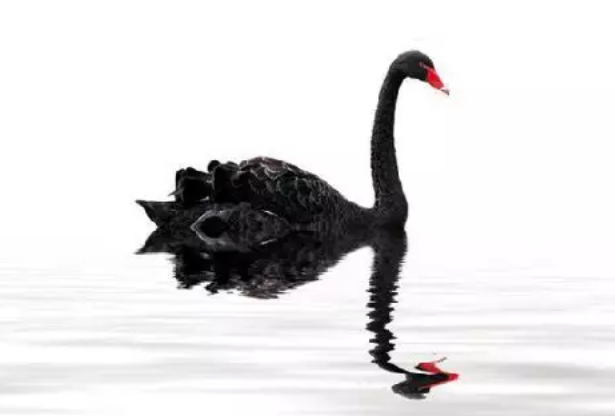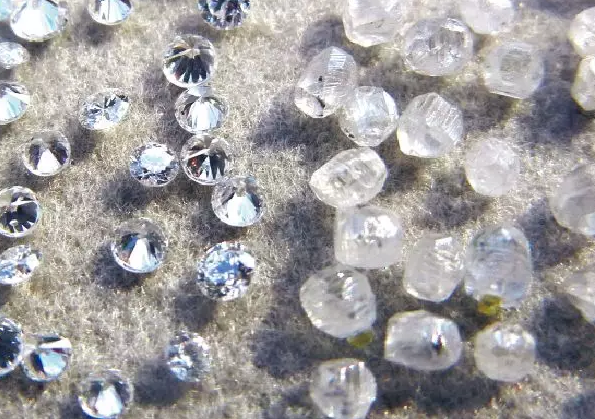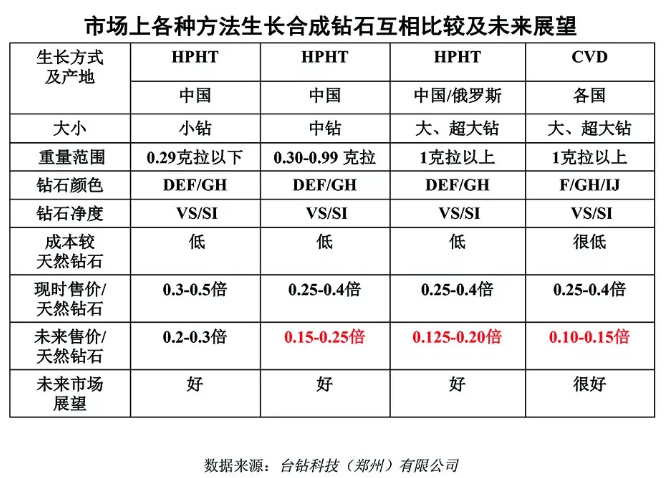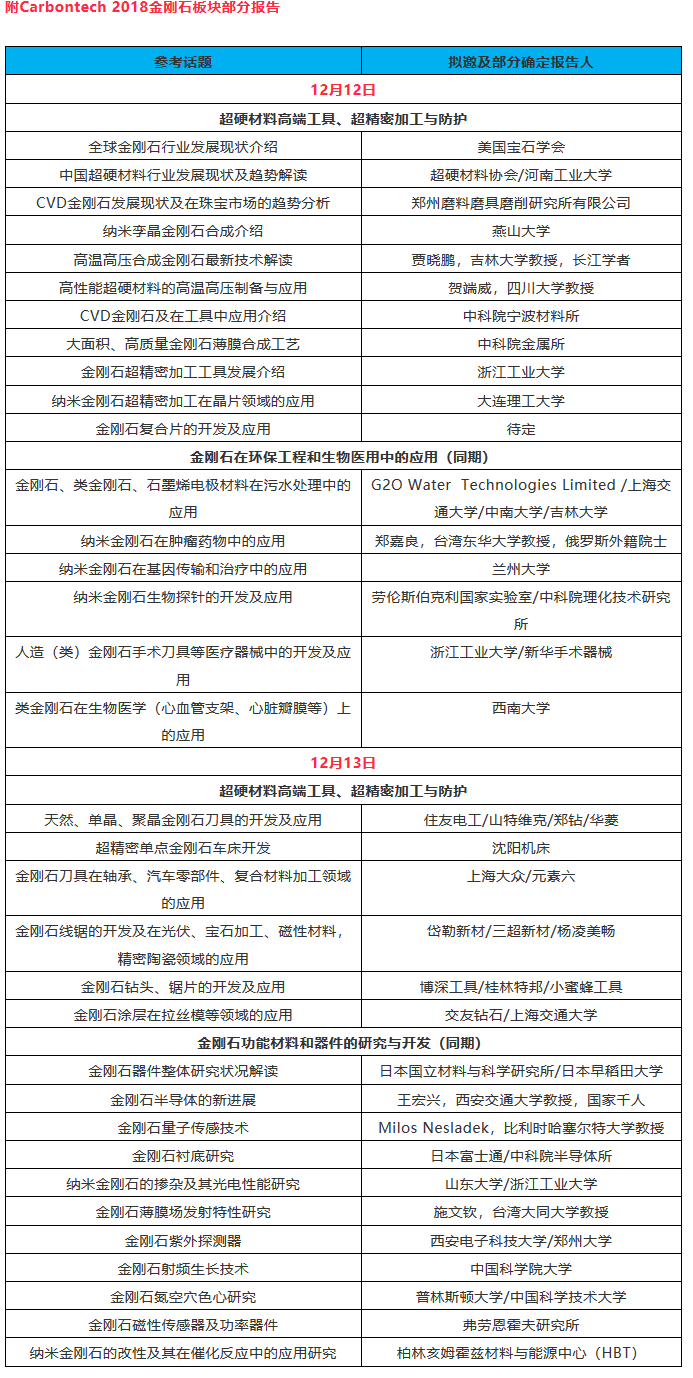Black Swan The diamond industry is welcoming historic changes in 2018. One of its landmark events is the launch of the Diamond Brand Lightbox (Lightbox Jewelry) by the century-old diamond giant De Beers, which officially went on sale on the official website in September. Although De Beers claims that “synthetic diamonds are only a supplement to the diamond market, aiming to provide consumers with a new choiceâ€, and the synthetic diamonds they sell do not produce a “carat premium†and do not provide quality grading, but they are important in the industry. The big company, De Beers’s “God Assist†will undoubtedly make the future of the confusing synthetic diamond market clearer. The other news came from the US Federal Trade Commission (FTC). In the newly released Jewelry Guide, the FTC removed the word “natural†from the basic definition of diamonds and no longer recommended the use of “synthetic†to refer to diamonds produced in the laboratory. This means that the status of synthetic diamonds has never been higher. In response to this, in August this year, CTI Huazhi Gem Lab, one of the largest third-party comprehensive testing organizations in China and the first listed company in China's testing industry, issued China for the synthetic diamond brand CARAXY. The first "Laboratory Diamond Identification Report". It is reported that the report is the first domestic gem identification institute to issue laboratory professional identification and grading data for synthetic diamonds. To a certain extent, it marks that the “laboratory diamondsâ€, a new diamond category, has been officially accepted by the domestic jewelry market. It seems that synthetic diamonds, which are only known as “the biggest black swan in the diamond industryâ€, are recognized by the “Swan Group†and the magnificent picture of future market development has also begun. On the other hand, as a relatively unfamiliar emerging market, how products and services match market demand, how to promote market education and promotion, how to break the “glass door†such as standard name, testing technology and related trade policies, etc. The road to the development of the synthetic diamond market is a roadblock. The future is based on current needs. Synthetic or natural? This is no longer a multiple choice question, but a short answer question. How to hold on to this future, the answer is in the hands of everyone who is courageous and intelligent. The following collective diamonds refer to laboratory-grown diamonds. Uninvited guest: "Black Swan" appeared In May 2012, the IGI Antwerp Laboratory (International Gemological Institute) detected 461 synthetic diamonds in a batch of 605 diamonds ranging in size from 0.30 to 0.70 carats. Almost at the same time, the National Jewelry Quality Supervision and Inspection Center (NGTC) also found a batch of undisclosed synthetic diamonds in the Shenzhen laboratory. As a result, synthetic diamonds have entered the industry's vision and broke the peace of the diamond circle. Synthetic diamonds enter the jewelry industry, and breakthroughs in production technology are key. It is understood that synthetic diamond technology originated in the 1950s, but it has not been until the last few years that gem-quality synthetic diamonds have emerged, and they have reached market-oriented levels in terms of quality and cost. With the intrusion of synthetic diamonds, the synthetic diamond industry is also known to more diamond industry insiders. As a high-tech industry supported by the state, the synthetic diamond industry has not intersected with the jewelry industry. The synthetic diamonds produced by the company are supplied to the construction, manufacturing, energy, military, aerospace and other industries according to their quality and type. As of 2016, China has consistently ranked first in the world in synthetic diamond production for 14 consecutive years. China's synthetic diamond production accounts for more than 90% of the world's total production of synthetic single crystal diamonds, and its production in 2016 is close to 20 billion carats. In 2015, China's top two synthetic diamond producers, Zhongnan Diamond and Yellow River Cyclone, produced nearly 1,900 tons of synthetic diamond. However, the production of gem-quality synthetic diamonds in China in 2015 is very small, with small-sized synthetic diamonds of hundreds of thousands of carats and smaller particles of diamonds, only tens of thousands of carats. According to relevant statistics, in 2015, the global annual output of synthetic diamonds was about 2,3,4,200,000 carats, accounting for 2% to 3% of natural diamonds. The quality of synthetic diamonds has also increased year by year. The largest colorless synthetic diamond in the world detected by the laboratory can achieve 10.02ct and E color VS1. Under the impetus of technology, the production capacity and quality of synthetic diamonds have rapidly increased in a short period of time, becoming a “black swan†that affects the healthy, stable and orderly development of the diamond industry. On the one hand, synthetic diamonds that are mixed into natural diamonds will not seriously affect the consumer confidence of the diamond market, but also test the screening and inspection capabilities of various quality inspection agencies; on the other hand, even if they are properly disclosed and formalized as required Channels have entered the market, and the pricing system and identification standards for synthetic diamonds have also been criticized. At present, the pricing system for synthetic diamonds mainly refers to the quotation of the same quality natural diamonds, on the basis of which 20% to 30% is discounted, instead of pricing according to the comprehensive production cost increase; and for the identification of synthetic diamonds, different institutions The standards are not the same. For example, NGTC, GIA and other institutions only provide rough grading for synthetic diamonds, and IGI, HRD and other appraisal institutions provide certificates for synthetic diamonds in full accordance with the standards of natural diamonds. Differences in certificate accuracy, gem naming, etc. have brought considerable trouble to practitioners and consumers. In addition, in the public opinion propaganda, the “saliva†of the natural diamond and synthetic diamond industry has never stopped. The former accused the latter of “grabbing the milk and bread of the African peopleâ€, while the latter blamed the former for “blood drilling†and “the production process undermined the ecological environmentâ€. The wrestling between the two sides is also reflected in the establishment of relevant organizations. In 2015, the world's seven largest natural diamond mining companies jointly established the Diamond Manufacturers Association (DPA), and the corresponding International Synthetic Diamond Association (IGDA) has also been established. In this context, in September 2016, the China International Diamond Industry Summit Forum, co-sponsored by China Gold News and NGTC, was held in Shenzhen. All parties started a whole day on the “Trends and Challenges of the Natural & Synthetic Diamond Marketâ€. discuss. At this meeting, the industry basically reached a consensus: blocking is not as good as it is, and it is a general trend for synthetic diamonds to enter the jewelry market. To achieve the healthy development of the diamond industry, it is necessary to establish a separation zone between natural diamonds and synthetic diamonds, so that products of two different natures can find a market development mode suitable for them, and develop in parallel according to their respective positioning. After the consensus was reached, the natural diamond industry and the synthetic diamond industry formed a delicate balance in a short period of time, and the market spent a year in the calm. Giants admission: good food is not afraid of late At the end of May 2018, De Beers announced its entry into the synthetic diamond industry. In addition to the launch of the Synthetic Diamond Lightbox Jewelry, De Beers' subsidiary Element Six invested $94 million in a synthetic diamond factory that will be used directly in the new brand. . Previously, Element Six, which was established in the 1950s, has been committed to the research and education of synthetic diamonds, and insists that “it will not directly enter the synthetic diamond marketâ€. According to statistics, in 2017, synthetic diamonds sold about 1 million carats in the jewelry market, worth about $500 million, less than 10% of the entire diamond jewelry market. The public opinion is awkward. Although in recent years, there are not many well-known jewelry brands that actively arrange synthetic diamonds. For example, Swarovski created the synthetic diamond brand “DIAMA†in the United States in 2016 and selected some independent high-end jewellery retail stores for sale. In China, Zhengzhou Huajing Diamond Co., Ltd., a leading manufacturer of synthetic diamonds, also established a synthetic diamond sales company in Shanghai and opened an offline experience store in Zhengzhou. But De Beers, who has always been the "spokesperson" of the natural diamond industry, suddenly "anti-water", as if he had cast a bomb in the entire diamond industry. For a time, he accused it of “being without words†and thought that it was “not drunk, not intended to be a wine, intended to counter the synthetic diamond marketâ€, especially De Beers’s “1 carat 800 US dollarsâ€. The pricing is even more marked by the “price butcher†in the synthetic diamond industry. As an industry giant with a large amount of natural diamond resources and a hundred years in the industry, De Beersgan is taking the world by storm. The sword refers to the synthetic diamond market. What is its intention? In the view of Lin Hongbing, general manager of CDC Cultivating Diamonds (China), it is not appropriate to overstate the deep meaning of De Beers's move. It should be more realistic and look at the internal and external situation that it is currently facing as a profit-seeking company. He believes that the day De Beers has transitioned from a resource company to a trading company since the establishment of the Diamond Consulting Center (DTC). This layout of the synthetic diamond market is only a microcosm of its transformation. De Beers’ 2018 Diamond Industry Insight Report released this year shows that global diamond jewelry demand in 2017 was $82 billion, and millennials (80, 90 after) and Z generation (post-95) consumers swept the world. 2/3 of sales. De Beers believes that the commonality between the millennial and the Z generation brings opportunities to the diamond industry: First, these two generations have their own views on love and commitment, and their attitude towards expressing and symbolizing love. It is constantly evolving, with more and more attention to personalized products and easy experiences to reflect their personal values ​​and preferences. At the same time, giving diamonds as a gift only because of cherishing love or romance (not related to marriage) is also an important part of the needs of the younger generation of consumers. Second, millennials and Z generations have a strong sense of social responsibility, and only choose products that are sourced reliably and in a responsible manner. They hope that the brand can support its own moral high theory with practical actions, and we must transition from “speak to me†to “show it to meâ€. De Beers Group CEO Bruce Cleaver said: "Some new ideas are affecting millennials and Z-generation consumers. The diamonds they value may have different designs, symbolizing new love expressions. The way. They also buy diamonds in different ways to celebrate different moments in life. If we can seize the opportunity, the most exciting changes must be waiting for us in front." Obviously, De Beers launched the synthetic diamond brand, which is one of the ways to “grab the opportunityâ€. Lin Hongbing believes that De Beers, due to the historical inertia of upstream resource control, has long been hidden behind the scenes, far from the terminal market, and does not prevail when competing with brands such as Swarovski and Pandora. In the current business world with market demand as the core, the consumer habits of the end consumers, the timely insight into the consumption concept and the effective collection of customer data will become the core competitiveness of the company. “Although De Beers has launched a terminal brand before, it is positioned too high-end. The launch of the synthetic diamond brand will accurately identify emerging consumers. It is undoubtedly a broader and vibrant market.†At the same time, the downturn in global diamond rough sales has also put pressure on De Beers. De Beers' latest financial data shows that in the seventh sales cycle of the year ended September 10, its global diamond raw embryo sales decreased by 5.5% from the previous cycle and 0.4% from the previous year's $507 million. . This is the worst performing cycle for De Beers since the release of relevant sales data in 2016. In order to cope with this situation, De Beers changed the practice of packaging sales in the past and began to allow the sightholders to refuse to buy small and cheap diamonds. The last time De Beers took a similar move, it was the “expedient measure†that was made two years ago due to the decline in the demand for rough diamonds that were hit by the Indian banknote movement. China Opportunity: Breaking Through in Adversity As the world's largest producer of synthetic diamonds, China's synthetic diamond market has ushered in unprecedented opportunities. First, the production alert for the natural diamond industry has already sounded. Rapaport, the world's largest diamond trader, said that the annual natural diamond mining volume will reach its peak in 2019, and then it will gradually decline. This means that synthetic diamonds will be a de facto important addition to the natural diamond industry from the supply chain, and will be used to divide a portion of natural diamonds, especially the low-end natural diamond consumer market. Second, in China, where diamond consumption ranks second in the world, the market prospects for synthetic diamonds are relatively optimistic. According to the “Report on the Status Quo and Prospects of Synthetic Diamond Development†released by China Gold News in 2016, more than half of the people know about synthetic diamonds, and more than half of the respondents clearly expressed their willingness to purchase synthetic diamonds. Unlike natural diamonds, the use of synthetic diamonds ranks first in terms of decorative wear. The top three factors in the purchase of synthetic diamonds are: the same quality as natural diamonds, richer colors and styles, and more favorable prices. There are indications that the market for synthetic diamonds is broad enough. Consumer demand for diamonds has gradually escalated from the initial wedding diamond ring to the overall image matching stage, which will create rare opportunities for synthetic diamonds and will also change the inherent pattern of the diamond industry for a long time. Just in the past Shenzhen exhibition and Hong Kong exhibition in September, there have been booths for synthetic diamond producers and retailers such as Russia's NDT and Hong Kong CDC, attracting many wholesalers and consumers to stop by. According to Morgan Stanley’s industry forecast at the beginning of the year, by 2020, synthetic diamonds will account for 15% of the jewellery-grade small carat diamond market, and 7.5% of the jewellery-grade large carat synthetic diamond market. The market space for synthetic diamonds is further increasing. Of course, as an emerging market that satisfies consumers' multiple choices, the development of synthetic diamonds in China is still hampered and long. An industry person who does not want to be named said that for the Chinese jewelry industry, synthetic diamonds make it difficult for China to stand on the same starting line as the world in mainstream raw materials, and have the opportunity to lead the world and establish China's right to speak in the mainstream jewelry market. However, at present, there are many problems that need to be solved, no matter from industry standards, policy trends, market promotion, and supporting systems. “At present, I am actively preparing for the establishment of the Asian Diamond Culture Association and trying to participate in the exhibition in the name of the association to expand the influence and voice of China in cultivating diamonds worldwide.†But he admits that the resistance is clearly felt during the implementation process. It’s still very difficult to take this step. In Lin Hongbing's view, for practitioners, first of all, synthetic diamonds as a new gem, give jewelry practitioners a choice. Compared with natural diamonds, the standardization of synthetic diamond production makes the setting process more efficient and solves the short plate of natural diamonds inlaid. Second, synthetic diamonds have a unique intrinsic value that gives consumers a new sense of experience. It is the gene for the creation and sublimation of the future jewelry culture and the value recognized by young consumers in the future. Lin Hongbing believes that the current synthetic diamond industry colleagues should strengthen unity, dare to speak and act positively, and seek breakthroughs in the following three aspects. The first is to solve the problem of insufficient credibility. The current name for synthetic diamonds is varied and there is no uniformity. The current national standards of "Jewelry and Jade Name", "Jewelry and Jade Identification" and "Diamond Grading" have always named laboratory-grown diamonds as "synthetic diamonds". If the certificate for growing diamonds in the laboratory is changed from “synthetic diamonds†to “nurturing diamondsâ€, it will be able to integrate into the jewelry industry more quickly. The second is to solve the problem of unclear and unstable source supply prices. Suppliers must supply the market in an orderly manner and serve the mainstream brands in the market. Do not sell, do not sell, to ensure that the price will not become a factor that causes market confusion. The third is to solve the problem of the current unclear positioning of synthetic diamond brands and lack of brand awareness. For example, the same style is made of synthetic diamonds and natural diamonds, allowing consumers to choose. Swarovski has listed the diamond brand DIAMA as a luxury collection, meaning that high-end brands can also use synthetic diamonds. The brand can effectively target the target consumers by adopting a young and fashionable sub-brand strategy. Understand that CDC is strategically cooperating with Zhongnan Diamond, one of the largest synthetic diamond producers in China, and has its own cutting mills in Zhengzhou and India, serving jewelers in Panyu, Shenzhen, Hong Kong and Mumbai. . In production research and development, CDC has launched 10 carat VS grade HPHT synthetic diamonds. As one of the earliest brands to develop the synthetic diamond end market, the sales of synthetic diamonds (CARAXY) since its establishment in 2015, the sales of synthetic diamonds have been growing steadily year by year. In 2017, the company's turnover exceeded 30 million yuan. Its general manager, Guo Sheng, said that “the market growth of cultivating diamonds and the opening of policies are less than expected, which has led to a lot of pressure on the entrepreneurial teamâ€, but he still has confidence in the future of synthetic diamonds. He also revealed that Kelly is actively engaging with the Shanghai Diamond Exchange to seek the possibility of adding "synthetic diamonds" to the trade items of jewelry. Once this is achieved, it means that the import and export channels of synthetic diamonds are truly opened, which will lay the foundation for the growth of the synthetic diamond market. For the synthetic diamond market, “the future has come†is not an empty talk, but how to grasp the future is the courage and wisdom of everyone. The above content comes from the network collection, for reference only! Part of the content comes from research and analysis, reference article "Diamond in the medical field." Registration consultation Liu Xiaoyu phone Email @qq.com Cheng Le phone Email @qq.com TEMPERED GLASS TOP TEMPERED GLASS TOP GUANGZHOU AIJINGSI TRADING LIMITED , https://www.aichugashob.com



Abstract The black swan diamond industry is welcoming historic changes in 2018. One of its landmark events is the launch of the Diamond Brand Lightbox (LightboxJewelry) by the century-old diamond giant De Beers, which was officially sold on the official website in September. Despite Daiby...